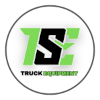Understanding the regulations and requirements for commercial vehicle inspections and truck-mounted crane inspections is crucial for businesses operating in British Columbia (BC). This comprehensive guide will delve into the specifics of these inspections, providing valuable information to ensure compliance and safety. Whether you’re a fleet manager, business owner, or operator, this guide will serve as a resource for navigating BC’s inspection requirements. Commercial vehicle inspections and truck-mounted crane inspections are vital components of maintaining safety and compliance in the transportation and construction industries. These inspections help ensure that vehicles and equipment are in optimal condition, reducing the risk of accidents and enhancing operational efficiency.
Overview of Commercial Vehicle Inspections in BC
What is a Commercial Vehicle Inspection?
A commercial vehicle inspection is a mandatory process that assesses the safety and roadworthiness of commercial vehicles. In BC, these inspections are regulated by the Commercial Vehicle Safety and Enforcement (CVSE) branch of the Ministry of Transportation and Infrastructure.
Types of Commercial Vehicle Inspections
- Annual Inspections
- All commercial vehicles with a licensed gross vehicle weight (GVW) of more than 8,200 kg are required to undergo annual inspections.
- These inspections ensure that vehicles meet safety standards and are fit for road use.
- Pre-Trip Inspections
- Daily pre-trip inspections are mandatory for commercial vehicle operators. These inspections involve checking critical components like brakes, lights, tires, and steering.
- Operators must complete a pre-trip inspection report and keep it on record.
- Random Roadside Inspections
- CVSE officers conduct random roadside inspections to ensure ongoing compliance with safety regulations.
- These inspections can happen at any time and may include a full vehicle inspection or specific component checks.
Key Components of a Commercial Vehicle Inspection
- Braking System
- Inspect brake pads, rotors, and lines for wear and damage.
- Ensure that the braking system meets the required performance standards.
- Steering and Suspension
- Check the steering mechanism for proper function and the suspension system for signs of wear or damage.
- Ensure that the vehicle’s alignment is correct.
- Lighting and Electrical Systems
- Verify that all lights, including headlights, taillights, brake lights, and turn signals, are functioning correctly.
- Check the electrical wiring for any signs of damage or corrosion.
- Tires and Wheels
- Inspect tires for tread depth, proper inflation, and any signs of damage or wear.
- Ensure that wheels are securely attached and free of defects.
- Exhaust and Emission Systems
- Check the exhaust system for leaks and ensure that emission levels comply with environmental regulations.
- Inspect the catalytic converter and other emission control devices.
Truck Mounted Crane Inspections
What is a Truck Mounted Crane Inspection?
Truck-mounted crane inspections are specialized assessments that focus on the safety and functionality of cranes mounted on trucks. These inspections ensure that cranes operate safely and efficiently, preventing accidents and equipment failures.
Types of Truck Mounted Crane Inspections
- Annual Inspections
- Similar to commercial vehicle inspections, truck-mounted cranes must undergo annual inspections to ensure they meet safety standards.
- These inspections cover both the crane and the truck it is mounted on.
- Pre-Operational Inspections
- Operators must conduct pre-operational inspections before using the crane each day. This involves checking critical components and safety features.
- A pre-operational inspection checklist must be completed and retained.
- Periodic Maintenance Inspections
- Scheduled maintenance inspections are performed based on the manufacturer’s recommendations and usage frequency.
- These inspections focus on specific components prone to wear and require regular maintenance.
Key Components of a Truck Mounted Crane Inspection
- Structural Integrity
- Inspect the crane’s structure, including the boom, jib, and outriggers, for signs of damage, wear, or corrosion.
- Ensure that all welds and connections are secure and free of defects.
- Hydraulic System
- Check hydraulic lines, hoses, and cylinders for leaks, wear, and proper function.
- Ensure that the hydraulic system operates smoothly and efficiently.
- Electrical System
- Verify that all electrical components, including control panels, limit switches, and safety devices, are functioning correctly.
- Check wiring for any signs of damage or wear.
- Load Handling Components
- Inspect hooks, chains, slings, and other load-handling devices for wear, damage, and proper certification.
- Ensure that load handling components meet the required safety standards.
- Safety Devices
- Check all safety devices, including overload protection, emergency stops, and limit switches, for proper operation.
- Ensure that safety devices are tested and functioning as intended.
Compliance and Documentation
Record Keeping Requirements
- Inspection Reports
- Maintain detailed records of all inspections, including pre-trip, annual, and pre-operational inspections.
- Ensure that reports are signed by the inspector and retained for the required period.
- Maintenance Logs
- Keep comprehensive maintenance logs documenting all repairs, servicing, and replacements.
- Maintenance logs should be readily accessible for review during inspections.
- Compliance Audits
- Prepare for compliance audits by ensuring all documentation is up to date and accurately reflects the condition and maintenance history of the vehicles and equipment.
- Conduct internal audits regularly to identify and address potential compliance issues.
Regulatory Agencies and Resources
- Commercial Vehicle Safety and Enforcement (CVSE)
- The CVSE is the primary regulatory body overseeing commercial vehicle inspections in BC.
- The CVSE provides guidelines, resources, and updates on inspection requirements.
- WorkSafeBC
- WorkSafeBC offers resources and regulations related to workplace safety, including the safe operation of truck-mounted cranes.
- Utilize WorkSafeBC’s guidelines to ensure compliance with occupational health and safety standards.
Best Practices for Ensuring Compliance and Safety
- Regular Training and Certification
- Ensure that all operators and maintenance personnel are adequately trained and certified.
- Provide ongoing training to stay updated on new regulations and best practices.
- Implementing a Preventive Maintenance Program
- Develop and implement a preventive maintenance program to address potential issues before they become major problems.
- Schedule regular inspections and maintenance based on the manufacturer’s recommendations and usage patterns.
- Utilizing Technology for Inspections
- Leverage technology, such as inspection software and mobile apps, to streamline the inspection process and ensure accurate record-keeping.
- Utilize telematics and other monitoring systems to track vehicle and equipment performance in real-time.
Conclusion
Maintaining compliance with commercial vehicle and truck-mounted crane inspection regulations in BC is essential for ensuring safety and operational efficiency. By understanding the requirements, conducting regular inspections, and implementing best practices, businesses can reduce risks, avoid penalties, and enhance the reliability of their fleets.
At Sustainable Truck Equipment, we are committed to helping you meet these standards through our comprehensive range of services and solutions. Contact us today to learn more about how we can support your business in achieving compliance and maintaining the highest safety standards.

